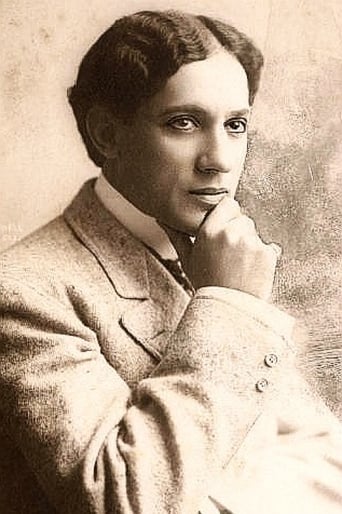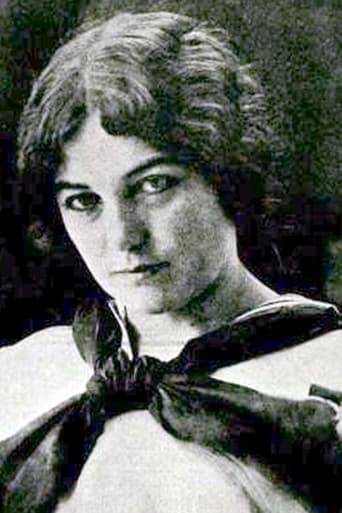Cineanalyst
This is the oddest screen adaptation of Robert Louis Stevenson's novella "The Strange Case of Dr. Jekyll and Mr. Hyde" that I've seen. It was a low-budget silent film, which transported the story from old London to contemporary New York as a result. The other alterations made to the story have less clear reasons for being. Dr. Jekyll is turned into an atheist out to prove his theory that there's no soul, and his experiments lead him to lose his girlfriend to a rival suitor. Sheldon Lewis' Hyde is more gleeful and revengeful than other incarnations, and he's quite the arsonist—inspiring a considerable police manhunt and episodes of Hyde evading escape. Indeed, comparisons to the Keystone Kops are justified; in one scene, the cops overlook a chest in which Hyde is hiding only to check it after he's left, and in another scene, they laughably struggle to open a tenement door while a woman is being strangled. This ends with an original dénouement where Hyde is caught and condemned to the electric chair. But, wait, it turns out that it was all a dream. Jekyll awakes from his nap, to proclaim to his girlfriend, "Bernice – Bernice – I believe in God – I have a soul – and – and I still have you!"Some, thankfully, quick, but often too choppy editing helps wrap all of this up in about 40 minutes. In one scene, there is a very bad jump cut to a more distant camera position to make room for Jekyll moving around a living room. The transformations between Jekyll and Hyde are also accomplished via choppy crosscutting in lieu of special effects. Nevertheless, this is an amusingly strange and so-bad-its-good version of "Dr. Jekyll and Mr. Hyde".
MARIO GAUCI
In view of Michael's favorable reaction to it and my own appreciation of the 'rival' version made the same year starring John Barrymore (and which Mike feels is inferior), I was looking forward to watching yet another adaptation of the R.L. Stevenson classic. However, even after having seen the archaic one-reel version of 1912 last year, I wasn't prepared for the laugh-riot which this four-reeler turned out to be! To begin with, its change in period and setting – the story having been transposed to modern-day New York – doesn't do the film any favors except to render the whole pretty ridiculous, what with Mr. Hyde falling foul of the Keystone Kops (at least that's who the impossibly inept police officers here reminded me of!) and his eventual demise in the electric chair!! Even worse is Sheldon Lewis' performance: his Jekyll is a non-entity, while Hyde can only be described as a spastic wreck – who gets a lot more footage, not necessarily a good thing – with a tendency towards mild looting and arson, rather than personifying the bestial sadist and murderer conceived by Stevenson (and which practically all other versions adhere to)!! And let's not even get into that preposterous Caligariesque coda! At least, the intertitles are accompanied by some nice artwork… It goes without saying, therefore, that this particular "Jekyll & Hyde" can't possibly hold a candle to the Barrymore version, let alone the definitive Fredric March/Rouben Mamoulian one – and this makes me all the more curious to someday watch the 1913 film with King Baggott, which Michael still considers to be the best film version of the Stevenson novella
wmorrow59
I've seen this version of R. L. Stevenson's famous, much-filmed story only once, over 30 years ago, but it was a truly memorable experience. There are moments which remain vivid in my memory even today, not because it was a great film or even a good one, but for quite the opposite reason. Before describing the circumstances under which I saw it, however, I should clarify that this particular version should not be confused with the far superior one starring John Barrymore that was also produced in 1920. Certainly anyone who has seen both movies could not mistake one for the other, any more than one could mistake a two-dollar bottle of Malt Liquor for fine claret, and yet I know of one occasion when this occurred . . . concerning the films, I mean, not the booze.When I was a kid in Tulsa, Oklahoma, there was a local museum that offered a silent movie every Sunday afternoon. The prints tended to be battered, washed-out 16mm dupes, projected at the wrong speed and without music in a room which could not be adequately darkened. Needless to add, these were not optimum conditions for one's introduction to the works of Griffith, Eisenstein, Fritz Lang, etc., but in those pre-cable, pre-video days, it was just about the only way to see the films. Comedies usually transcended this treatment, but silent dramas suffered badly. To make matters worse, most of my fellow viewers -- and usually there weren't many -- seemed to believe that all silent films are, by definition, funny, so accordingly they'd hoot 'n' holler at them silly Old-Time flickers.Nonetheless, it was exciting to learn that the museum would be showing the John Barrymore version of Dr. Jekyll and Mr. Hyde, for I'd wanted to see that one ever since I first heard about it. I attended the screening with a friend, both of us in a state of high anticipation. But perhaps you've already guessed the punchline: Yep, they got the wrong print. Imagine our disappointment when, without explanation or apology, the projectionist started the film, the opening credits flashed on the screen, and we learned that our featured player for the afternoon was someone named Sheldon Lewis. Who the hell is Sheldon Lewis, you ask? Well, as it turned out, he was a guy who starred in a really bad version of Dr. Jekyll and Mr. Hyde, and this was one occasion when our fellow viewers' mockery of silent drama was fully justified and richly deserved, for this movie proved to be one of those so-bad-it's-funny experiences that gets better (i.e., worse and therefore funnier) as it goes along. Indeed, once we'd recovered from our disappointment at missing Barrymore, my friend and I couldn't help but join in the laughter.The casting was only the first of several surprises we encountered. The second was that, instead of setting the story in late Victorian London, the producers had updated it to "contemporary" New York, doubtless because it was easier on the budget that way. Next we found that, in place of the kindly if somewhat repressed Dr. Jekyll we were accustomed to, this Jekyll was a wild-eyed radical, a Free Thinker full of decadent liberal notions who boasts of his atheism. Hmmm, we wondered to ourselves; if this is Sheldon Lewis' Jekyll, what is his Hyde going to be like?We soon found out. And folks, you haven't lived until you've seen Sheldon Lewis' Mr. Hyde, a hairy, eye-rolling, quivering spazz, a crazed Proto-Hippy Clown of Evil. It's an astonishing performance, a thing of twitches, tics, and conniption fits for which the term "hammy" is woefully inadequate. Jerry Lewis (any relation?) could only dream of being this funny. I cherish indelible memories of watching Sheldon Lewis spazzing his way down streets and through alleys while the museum audience, we happy few, roared with laughter. Two images I retain: towards the end, when cops show up to break down the door of Hyde's laboratory, they're dressed in the genuine uniforms of the era which we couldn't help but associate with the Keystone Kops, which of course added to our amusement, but these cops earned their laughs by performing the clumsiest, most inept job of door-crashing ever captured on film. And then, so help me (Warning, "spoilers" ahead, unless you were at the museum that day) Dr. Jekyll wakes up, back in his study where he'd fallen asleep before his fireplace, only to realize that none of it -- the potion, the transformations, the murders, the ludicrous over-acting -- none of it had happened because, yes, It Was All a Dream, a Horrible Dream! Instantly reformed, Jekyll leaps up a changed man, throws his notebooks into the fire, renounces his Free Thinking ways and yelps: "I believe in God!" And for the finale, unless my memory deceives me, I believe Jekyll actually sees a glowing figure of Jesus over his fireplace, and kneels humbly before the Savior as the image fades out.Just an hour or two earlier none of us had ever heard of Sheldon Lewis, but by the end of the screening that day the man was a hero and his work had conquered all skeptics. I recommend this film heartily, but respectfully suggest that, for best results, it should be viewed in the appropriate frame of mind, i.e. at least three sheets to the wind, in a room full of like-minded, Free Thinking bad cinema enthusiasts.

